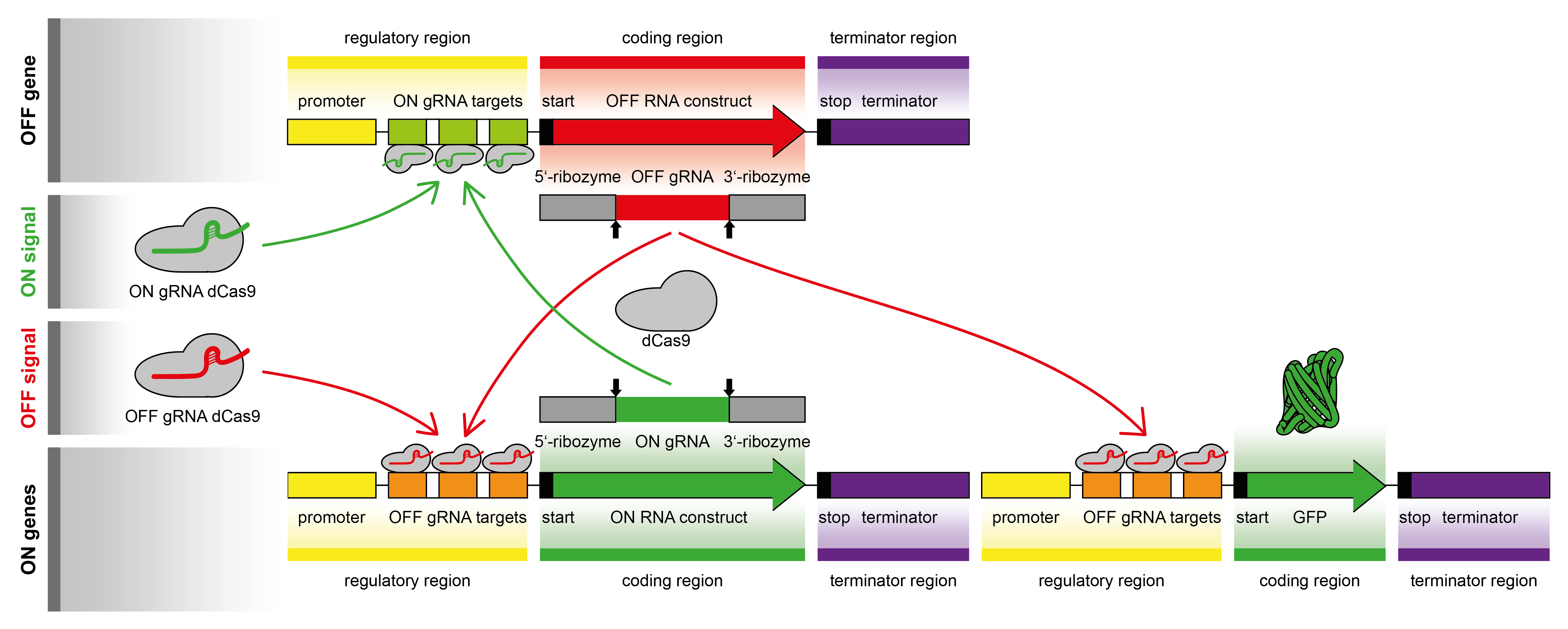![[Translate to English:] 1](/fileadmin/_processed_/c/6/csm_0e4915ef-e47b-48ed-b601-dce2c2808b7b_ebce5e0285.jpg)

Main features of the project:
The aim of our laboratory work is to create a "proof of concept" of our signalling pathway and to prove its functionality. We will express our signalling pathway first in Pichia pastoris, a yeast species, and then in Arabidopsis thaliana plants. We have chosen yeast as our model organism because it is an eukaryotic organism and is therefore better suited for a "proof of concept" of a mechanism which is expressed in plants. We chose Arabidopsis thaliana because we can permanently change the seeds and thus the genome of the next generation by transformation with the help of Agrobacteria. In addition, these plants grow very quickly, which is a great advantage due to the tight schedule.

How does our signalling pathway work?
In order to be able to control the production of a target protein with the aid of a signal, we need a kind of on/off switch, also known as a toggle switch. This allows the continuous production or blocking of the production of a protein by activating it only once with a signal. The toggle switch works in such a way that as soon as a signal docks to a specific receptor, it triggers the production of a specific repressor protein, which in turn prevents the reading of a specific region of the genome. When the switch is switched on, the off-gene is blocked, which means that the on-reppressor protein that binds to the on-gene is no longer produced. When switched off, the binding of another signal to the receptor in question causes the production of the off-prefressor protein, which binds to the on-gene and thus blocks it. This prevents the production of the protein and the plant is switched off, so to speak. The great thing about this system is that you only have to switch the production of a protein on or off once and this state is then maintained independently afterwards.
A wide variety of substances are conceivable as signals. It is important that they have no negative effects on the environment (soil, water, animals,...) and do not dock to receptors naturally contained in the plant so that no undesirable processes are triggered in the plant. In our case, we chose copper and ethanol. It is important to note that the quantities to be sprayed are very small, as they only have a signal effect.
How could you use Robocrop ??
With this toggle-switch we want to create a kind of platform with which the production of a variety of different proteins in plants can be controlled. The gene coding for the desired protein is placed in the correct position in the toggle switch, so it can be switched on and off. It would also be possible to integrate several different proteins and convert the toggle switch into a kind of cassette, which would enable specific proteins to be controlled with different signals.
There are many possible applications.
Every year there are crop failures at many fruit growers, as the trees begin to bloom in spring due to the high temperatures that occur earlier in the year. However, if there is another frost, the flowers freeze off and the tree no longer bears fruit in summer. This phenomenon is further exacerbated by the progressing climate change. However, if you could control the time of flowering with the help of a switch, such crop failures could be prevented.